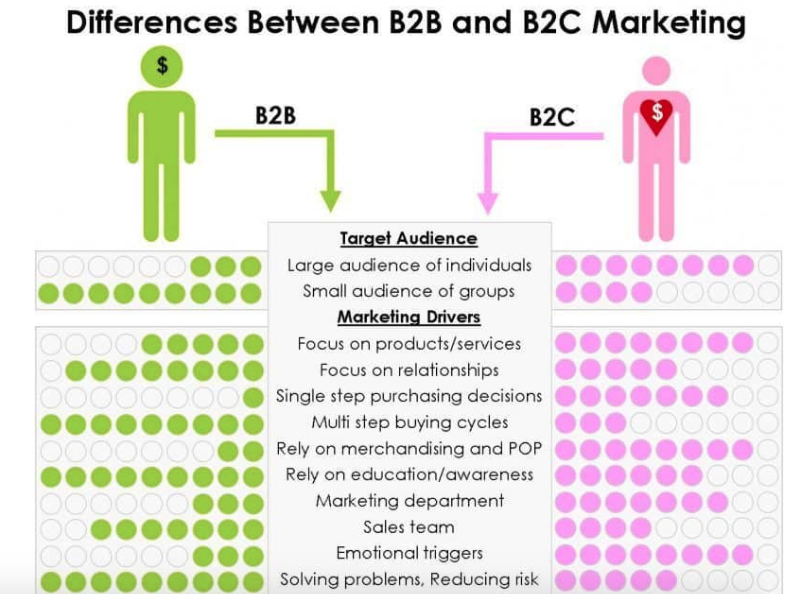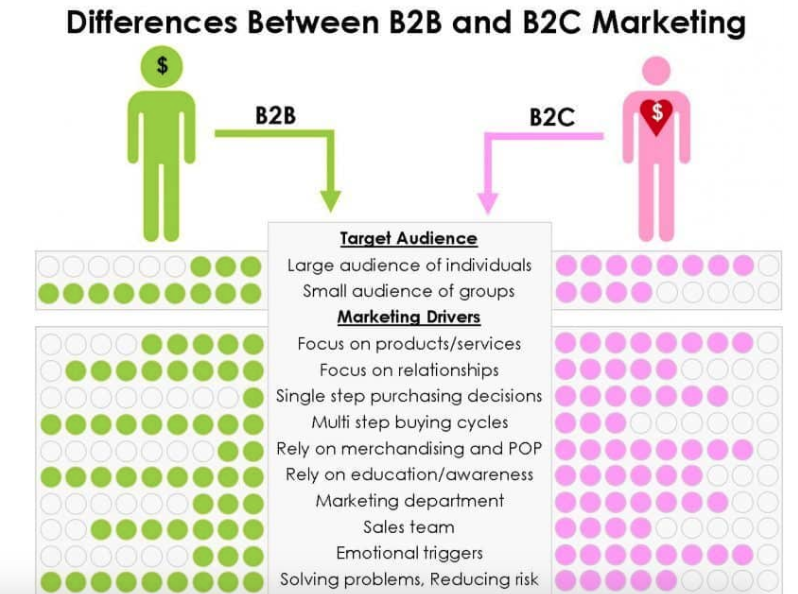If they intend to make more purchases in the long run, you can customize your production specifically for that customer. Again, this relates back to satisfaction and long-term relationship building. Sure, you won’t be able to print that logo on any of your other products for the rest of your clients, but you’re hoping that this type of personalization will result in repeat business from that customer. Let’s say your company makes coffee mugs and you’re selling a huge order to a business that gives them away as marketing material. Tell your clients why you got into business. If you’ve got years of experience in the industry you’re selling to, your clients may be more likely to buy something from you because your products will probably be made accordingly. You can talk about the way your experience helped you make modifications to equipment to make it safer, more ergonomic, etc.. Pay close attention to your pricing strategy With marketing, most people don’t tend to think about the price of what they’re selling. These things don’t matter as much when you’re selling directly to consumer, but they make a huge difference for B2B clients: Take a look at how pricing influences repeat purchases for B2B customers: Here’s an example to show you just how big of an impact pricing can make on a purchase. You sell directly to consumer as well as to other businesses. Your B2B marketing strategy needs to make your company grow.
Your B2B marketing strategy will differ from your typical B2C approach.
Sure, you may notice some overlap between the two, but for the most part, you’ll need a new plan if you want to target other businesses.
Some of you may have companies focusing on other businesses as your primary group of customers. And some of you may be considered both B2B and B2C companies.
If that’s the case, one overlap you may see between the two strategies would be social media marketing. But the difference would be in the way you use it.
Here’s an example. You could be using Snapchat to promote your business as the B2C company. But that won’t be effective as your B2B strategy. But we’ll dive into greater detail on the social media subject later.
For our purposes, it doesn’t matter what type of company you have.
Whether B2B sales make up the totality of your revenue or only a fraction of it, you’ll be able to benefit from this guide.
I’ll explain everything you need to know about how to properly manage and approach your B2B marketing strategy.
Define your buyers
When it comes to B2B marketing, this step will differ from your typical approach to identifying your target market.
That’s because this scenario will be much more specific. You’ve got a unique product or service. Right away, you’ll need to recognize which companies can benefit from whatever you’re selling.
For example, let’s say you manufacture cleaning chemicals for commercial dry cleaners.
You may assume that any dry cleaning business in the country or your region will fall into your target market. While this may be true, that doesn’t necessarily help you define your buyer.
Take a look at this graphic that highlights some of the key differences between your B2B and B2C target audience:

With this information in mind, let’s continue with our dry cleaning example. Whom are you selling to? Is it the owner of the company? The production manager? Is it the person who answers the phone when you call the facility?
Recognizing who has the buying power isn’t the same as identifying your target market.
As we can see in the graphic above, you’ll be focusing your B2B efforts on a much smaller group of people. That’s why it’s helpful to develop a customer persona to boost your conversion rates. You need to realize that the customer persona will vary depending on which business you’re dealing with.
This is one of the first things you should do before going forward with your marketing strategy.
If your buyers aren’t clearly defined from the beginning, the rest of your campaigns won’t make a ton of sense.
Focus on long-term relationships
If you’re selling directly to consumer, it’s obviously important to put effort on customer retention as well. But these types of relationships are way more important for B2B companies.
Think of it like this. Let’s say you sell something simple, like desk chairs.
If a direct consumer buys a chair from you and never buys again, it won’t make or break your company. But let’s say a hotel chain decides to buy chairs for every single room in one of its new buildings.
This is a relationship you can’t afford to lose. That’s why you need to do whatever you can to go the extra mile for your B2B customers.
A B2C customer can just go online and order something from your website. But your B2B clients may require more in-person support:

Let’s continue with the chairs and hotel example. You’ve got a huge opportunity here to continue selling to this client in the future.
Maybe they’re going to build more hotels. Eventually, they’ll even need the chairs replaced in their existing buildings as well.
You can’t just look at the initial sale and be done with it. Always look toward the future, and try to build a long-term relationship.
Adding the personal touch of being present for a delivery of goods can go a long way when it comes to repeat business. I understand this isn’t always practical for every customer or every transaction, but do what you can if it means securing a long-term B2B client.
Prioritize satisfaction
With B2B marketing, you need to make sure the customer is always satisfied. This concept relates back to our previous point about long-term relationships.
For the most part, satisfied customers will keep coming back.
There are certain things you can do to satisfy your B2B customers. Here’s what I mean.
Let’s say you sell file cabinets for offices. You wouldn’t send a free cabinet directly to the consumer, ask them to use it for a while, and then place an order if they want to buy more.
That just doesn’t make any sense from a B2C marketing strategy. How many file cabinets could one person possibly need in their personal home or office?
They would likely take the free one, and that would be the end of it.
But for a B2B company, sending free products to focus on customer satisfaction is a much more reasonable strategy.
To enhance satisfaction, you need to focus on the customer journey process after the point of purchase:

One or two free file cabinets is nothing if that satisfied customer buys thousands of units for their commercial office space. Take their feedback into consideration as well.
If they intend to make more purchases in the long run, you can customize your production specifically for that customer.
But we’ll talk more about this subject in greater detail shortly.
Personalization matters
As I just said, under some circumstances, you might need to…

COMMENTS